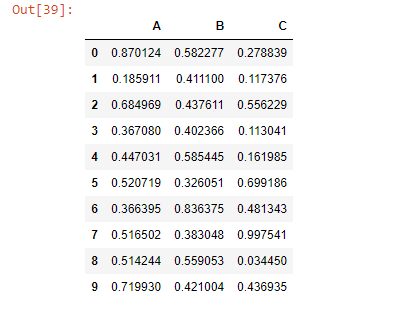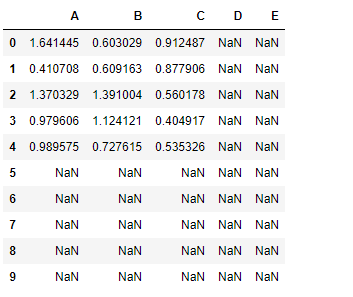Python | Pandas dataframe.add()
Last Updated :
19 Feb, 2021
Python is a great language for doing data analysis, primarily because of the fantastic ecosystem of data-centric Python packages. Pandas is one of those packages and makes importing and analyzing data much easier.
Dataframe.add() method is used for addition of dataframe and other, element-wise (binary operator add). Equivalent to dataframe + other, but with support to substitute a fill_value for missing data in one of the inputs.
Syntax: DataFrame.add(other, axis=’columns’, level=None, fill_value=None)
Parameters:
other :Series, DataFrame, or constant
axis :{0, 1, ‘index’, ‘columns’} For Series input, axis to match Series index on
fill_value : [None or float value, default None] Fill missing (NaN) values with this value. If both DataFrame locations are missing, the result will be missing.
level : [int or name] Broadcast across a level, matching Index values on the passed MultiIndex level
Returns: result DataFrame
import pandas as pd
import numpy as np
np.random.seed(25)
df = pd.DataFrame(np.random.rand(10, 3), columns =['A', 'B', 'C'])
df
|

Note: add() function is similar to ‘+’ operation but, add() provides additional support for missing values in one of the inputs.

Adding a constant value to the dataframe using add() function:

Notice the output above, no addition took place for the nan cells in the df dataframe.add() function has an attribute fill_value. This will fill the missing value(Nan) with the assigned value. If both dataframe values are missing then, the result will be missing.
Let’s see how to do it.
df.add(1, fill_value = 10)
|

All the nan cells has been filled with 10 first and then 1 is added to it.
Adding Series to Dataframe:
For Series input, the dimension of the indexes must match for both data frame and series.
tk = pd.Series(np.ones(10))
|

df.add(tk, axis ='index')
|

Adding one data frame with other data frame
np.random.seed(10)
df2 = pd.DataFrame(np.random.rand(5, 5), columns =['A', 'B', 'C', 'D', 'E'])
df2
|

Let’s perform element-wise addition of these two data frames

Notice the resulting dataframe has dimension 10*5 and it has nan value in all those cells for which either of the dataframe has nan value.
Let’s fix it –
df.add(df2, fill_value = 10)
|

Like Article
Suggest improvement
Share your thoughts in the comments
Please Login to comment...